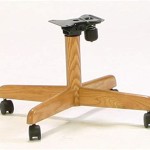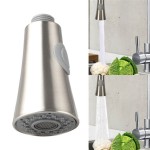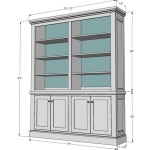An island kitchen is a great way to add extra storage and counter space to your kitchen. It’s usually placed in the center of the kitchen, and can be used for a variety of activities such as food preparation, cooking, eating, and entertaining. There are many different designs for kitchen islands, and each one has its own advantages and disadvantages. This guide will help you understand the different options available and help you choose the best kitchen island design for your home.
Types of Kitchen Islands
The most common type of kitchen island is a freestanding island. This type of island is typically placed in the center of the kitchen and is the most versatile. It can be used for food preparation, cooking, eating, and entertaining. It can also be used to store kitchen accessories and appliances. Freestanding islands are usually movable, so they can be moved around to provide extra counter space when needed.
Built-in islands are another popular option for kitchen islands. These are usually installed in one corner of the kitchen and can be used for food preparation, cooking, eating, and entertaining. Built-in islands are usually larger than freestanding islands, so they can provide more counter space. They are also usually stationary, so they can’t be moved around.
Another type of kitchen island is the rolling island. This type of island is usually smaller than a freestanding island and can be moved around to provide extra counter space when needed. Rolling islands are perfect for smaller kitchens, as they don’t take up too much space. They are also ideal for people who need extra counter space but don’t want to commit to a larger island.
Features of Kitchen Islands
Kitchen islands come in a variety of shapes and sizes, and can be customized with different features. Some common features include:
- Cabinets – Cabinets are a great way to add extra storage space to your kitchen island. You can choose from a variety of styles, sizes, and colors.
- Countertops – Countertops are a great way to add extra counter space to your kitchen island. You can choose from a variety of materials, including granite, quartz, and marble.
- Sinks – Sinks can be added to kitchen islands to provide extra space for cleaning and preparing food. You can choose from a variety of styles, sizes, and colors.
- Appliances – Appliances can be added to kitchen islands to provide extra convenience. You can choose from a variety of appliances, including microwaves, dishwashers, and refrigerators.
Benefits of Kitchen Islands
Kitchen islands are a great way to add extra storage, counter space, and convenience to your kitchen. Some of the benefits of kitchen islands include:
- Extra Storage – Kitchen islands provide extra storage space for kitchen accessories, appliances, and food. This can help free up valuable cabinet and counter space.
- Additional Counter Space – Kitchen islands provide additional counter space for food preparation and cooking. This can help make meal preparation easier and more efficient.
- Versatility – Kitchen islands can be used for a variety of activities, such as food preparation, cooking, eating, and entertaining. This makes them a great addition to any kitchen.
Conclusion
Kitchen islands are a great way to add extra storage, counter space, and convenience to your kitchen. There are many different types of kitchen islands, and each one has its own advantages and disadvantages. This guide has provided you with an overview of the different types of kitchen islands, their features, and the benefits that they offer. With this information, you should be able to choose the best kitchen island design for your home.














Related Posts








